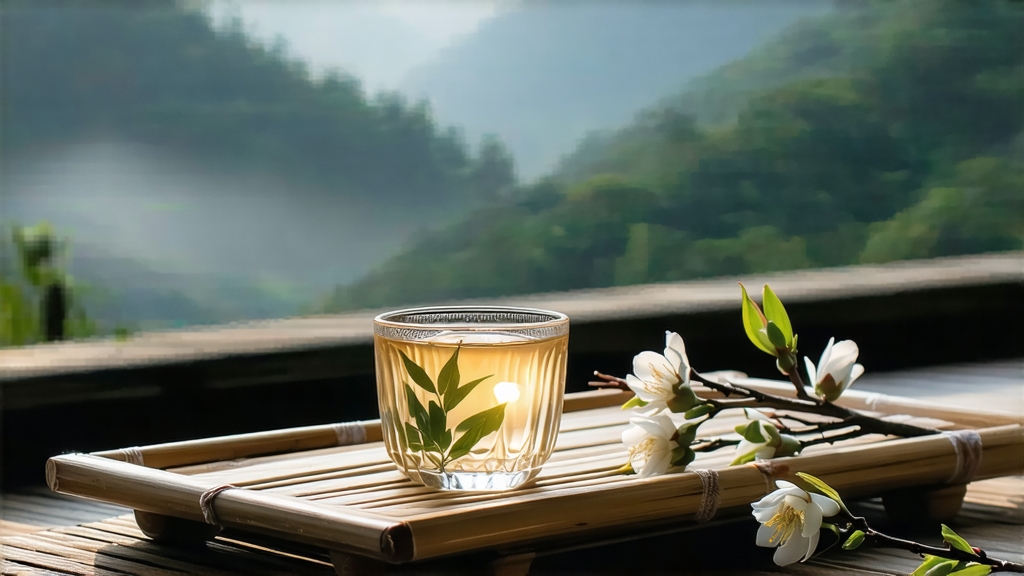
Bai Hao Yin Zhen—literally “White Hair Silver Needle”—is the quiet aristocrat of Chinese tea. To the uninitiated it can look like a handful of pale pine needles forgotten on a shelf, yet in the cup it releases the aroma of fresh rain on hay, the sweetness of wild melon, and a finish that lingers like moonlight on still water. Understanding Yin Zhen is less about mastering facts than about surrendering to delicacy: the tea rewards patience, cool water, and a mind free of haste.
History: from imperial elixir to global muse
The first written record of white tea appears in Song-dynasty treatises (960-1279 CE), but those texts speak of compressed “white” cakes made from broad-leaf varietals in northern Fujian. The Silver Needle we recognise today—entirely bud, entirely unrolled, entirely sun-dried—emerged during the late Qing, when tea merchants in Fuding and Zhenghe counties began selecting the newly domesticated Da Bai Hao (“Big White Down”) cultivar for its oversized, down-covered buds. Export records from 1857 show small parcels labelled “Pekoe Tips” leaving Fuzhou for London at prices higher than Keemun. European doctors of the time prescribed it for fever, believing the silvery hairs were concentrated “plant antibodies.” By 1891 Yin Zhen had become the tribute gift presented to the Guangxu Emperor on his birthday, wrapped in silk and stored in porcelain jars sealed with lotus leaves. The twentieth century’s wars nearly erased it; only a handful of state-run farms kept the cultivar alive. When China reopened in the 1980s, Japanese tea masters restoked global curiosity, and today Silver Needle is the benchmark against which all white teas are judged, fetching over two thousand US dollars a kilogram for pre-Qingming lots.
Terroir: two counties, two temperaments
Authentic Yin Zhen is legally restricted to Fuding and Zhenghe in Fujian Province, each side of the Wuyi foothills. Fuding, nearer the East China Sea, receives maritime fog that slows photosynthesis, building amino acids and a marine-saline note. Zhenghe, higher and more continental, gives cooler nights that lock in floral esters; its teas are broader in shape, with a lilac nose and a slightly tannic spine. Within Fuding itself, the micro-zone of Taimu Mountain—an extinct volcano whose soils are rich in rhyolitic minerals—produces the most luminous liquor, a pale chardonnay with a reflectance that tea photographers call “liquid platinum.” Elevation matters: buds picked at 400-600 m carry 22 % more catechins than those from the valley floor, yet paradoxically taste softer because slower growth reduces bitter flavonols.
Cultivar: the down-bearing patriarch
All true Silver Needle must be plucked from Camellia sinensis var. sinensis cv. Da Bai Hao, a shrub whose spring buds can reach 3.5 cm, each cloaked in a duvet of trichomes so dense it can be measured: 1,038 hairs per square millimetre under scanning electron microscopy. These hairs are not merely decorative; they are storage vaults for volatile terpenes (linalool, geraniol) that survive only because the leaf is never rolled or pan-fired. Growers allow the bushes to rest every third spring, pruning them into umbrella shapes that encourage horizontal buds—vertical buds, though longer, carry 30 % less down and are rejected by premium buyers.
Harvest calendar: the four-day window
Plucking begins when the nightly temperature stabilises above 10 °C and the bud’s first scale leaf has unfolded but the second remains tucked—botanists call this the “spear stage.” In Fuding this occurs between 15-20 March, always before Qingming festival. Experienced pickers use a twist-pick motion that snaps the petiole without bruising; fingernails are forbidden. A top worker gathers barely 500 g fresh buds per hour, the equivalent of 125 g finished tea after moisture loss. Rainy days cancel the harvest: waterlogged hairs collapse and will not re-erect during withering, leaving the tea flat and papery.
Craft: the art of doing almost nothing
White tea’s minimalism is deceptive; the processor must steer what is not done. The traditional sequence